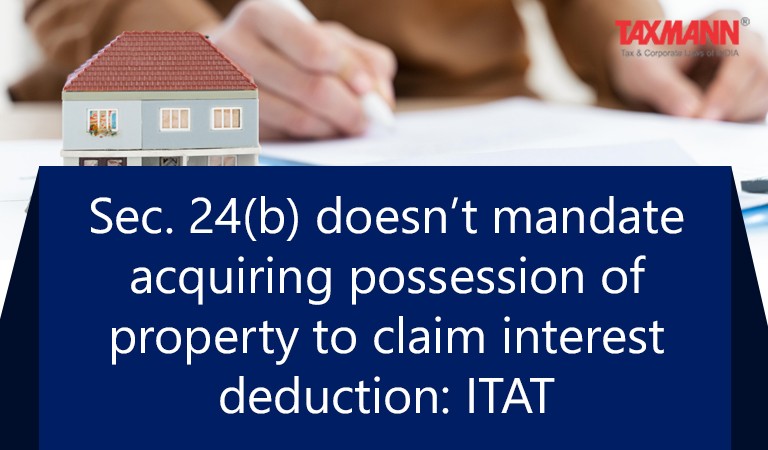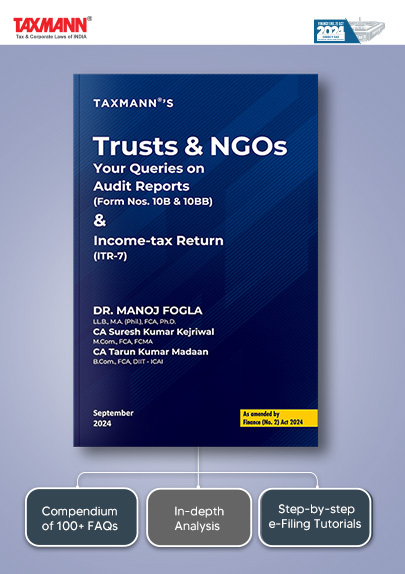Sec. 24(b) doesn’t mandate acquiring possession of property to claim interest deduction: ITAT
- Blog|News|Income Tax|
- 2 Min Read
- By Taxmann
- |
- Last Updated on 13 September, 2021
Case details: Abeezar Faizullabhoy v. CIT - [2021] 130 taxmann.com 156 (Mumbai - Trib.)
Judiciary and Counsel Details
-
- M. Balaganesh, Accountant Member and Ravish Sood, Judicial Member
- Brajendra Kumar for the Respondent.
Facts of the Case
Assessee, a lawyer by profession, had e-filed his return of income for A.Y. 2015-16. During the course of the assessment proceedings, it was observed by the AO that the assessee had claimed deduction of interest paid on borrowed capital of Rs. 2 lac under Sec. 24(b) under the head income from house property.
On being queried, it was submitted by the assessee that the aforesaid claim for deduction of interest pertained to the funds which were borrowed by him for purchasing a residential property. However, assessee had not taken possession of the property yet.
AO passed order disallowing claim for deduction of interest. On appeal, CIT(A) also upheld the order of AO. Aggrieved-assessee filed the instant appeal before the Tribunal.
ITAT Held
The Tribunal held that the view taken by CIT(A) while upholding the order of AO was misconceived. The CIT(A) held that in the absence of any control/domain over the property, the assessee would not be in receipt of any income from the same, therefore, allowing deduction under Sec. 24(b) qua the said property would be beyond comprehension.
Insofar the determination of the ‘annual lettable value’ of a property is concerned, the same as per Section 22 read with section 23 is dependant on the ‘ownership’ of the property, irrespective of the fact whether the assessee has taken the possession of the same or not.
Further, as per the plain literal interpretation of Sec. 24(b), there is no bar on an assessee to claim deduction of interest payable on a loan taken for purchasing a residential property, though, the possession of the same might not have been vested with him.
Thus, the interest which was admittedly paid on the capital that was borrowed for acquiring the property is to be allowed as deduction under section 24(b) even if possession of the property has not yet been acquired by assessee.
Disclaimer: The content/information published on the website is only for general information of the user and shall not be construed as legal advice. While the Taxmann has exercised reasonable efforts to ensure the veracity of information/content published, Taxmann shall be under no liability in any manner whatsoever for incorrect information, if any.

Taxmann Publications has a dedicated in-house Research & Editorial Team. This team consists of a team of Chartered Accountants, Company Secretaries, and Lawyers. This team works under the guidance and supervision of editor-in-chief Mr Rakesh Bhargava.
The Research and Editorial Team is responsible for developing reliable and accurate content for the readers. The team follows the six-sigma approach to achieve the benchmark of zero error in its publications and research platforms. The team ensures that the following publication guidelines are thoroughly followed while developing the content:
- The statutory material is obtained only from the authorized and reliable sources
- All the latest developments in the judicial and legislative fields are covered
- Prepare the analytical write-ups on current, controversial, and important issues to help the readers to understand the concept and its implications
- Every content published by Taxmann is complete, accurate and lucid
- All evidence-based statements are supported with proper reference to Section, Circular No., Notification No. or citations
- The golden rules of grammar, style and consistency are thoroughly followed
- Font and size that’s easy to read and remain consistent across all imprint and digital publications are applied






 CA | CS | CMA
CA | CS | CMA


